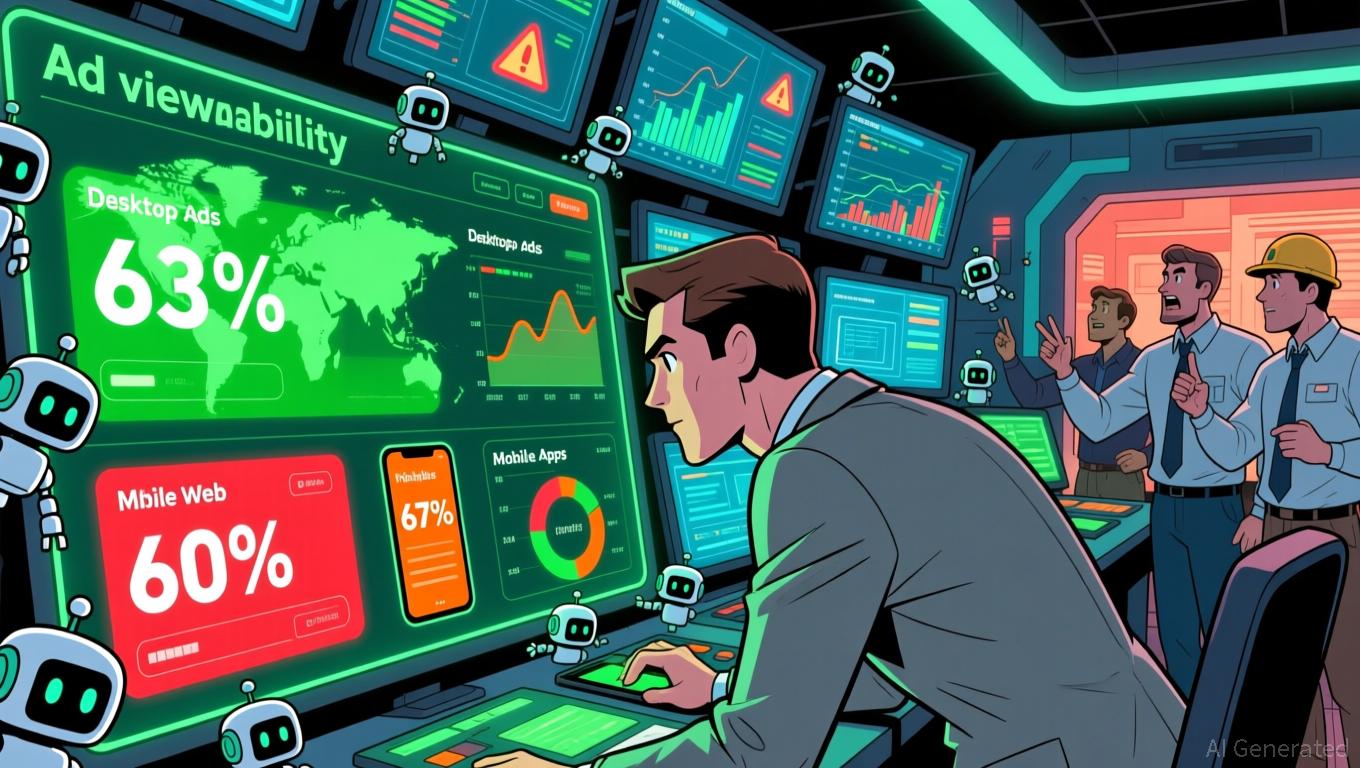AI-Generated Algorithms and Human Interaction: The Internet's Trustworthiness Dilemma
- The "Dead Internet Theory" resurfaces as AI-generated content dominates online platforms, blurring human engagement metrics. - Pixalate's Q3 2025 data reveals 37% non-human traffic in Brazilian mobile app ads, highlighting ad viewability crises. - C3.ai's 19% revenue drop and $117M loss underscore AI sector risks from high costs and competitive pressures. - Advertisers face unreliable metrics as algorithmic noise grows, prompting calls for stricter regulations and advanced analytics.
The "Dead Internet Theory"—which posits that a significant portion of online content is no longer viewed by real people—has resurfaced in discussions as artificial intelligence-generated material increasingly fills digital spaces. The rapid proliferation of AI-created content, along with falling ad viewability rates, has ignited conversations among advertisers, regulators, and technology experts regarding the reliability of online engagement statistics. Recent findings from Pixalate, a global platform specializing in ad fraud prevention, highlight the growing conflict between the expanding influence of AI and the trustworthiness of digital advertising metrics.
Pixalate’s Q3 2025 benchmarks for ad viewability reveal a complex environment. In Brazil, mobile app ads were viewed 62% of the time, while desktop web ads reached 69%. However, these numbers obscure ongoing challenges with automated bot traffic and non-human interactions. On a global scale, desktop web ad viewability stood at 63%, mobile web at 60%, and mobile apps at 67%. These statistics underscore a pressing issue:

The consequences go beyond just ad visibility. Firms such as C3.ai, which provides enterprise AI software, are contending with the economic impact of AI’s swift adoption.
The Dead Internet Theory is gaining momentum in this environment. With AI-generated material saturating social media, search engines, and advertising spaces, some critics claim the internet is turning into a "ghost town" dominated by algorithms. Pixalate’s research indicates that as much as 37% of mobile app ad impressions in Brazil might not be seen by actual people, supporting the theory’s main argument. For advertisers, this creates a challenge: spending on platforms where engagement data is increasingly questionable could result in wasted resources and lower returns.
At present, the issue remains unsettled. While Pixalate’s data underscores the need to tackle non-human traffic, companies like C3.ai demonstrate the financial dangers of relying too heavily on AI. As the digital world continues to change, stakeholders must find a balance between embracing innovation and maintaining accountability to preserve the internet as a place for genuine human connection, rather than letting it become dominated by automated processes.
Disclaimer: The content of this article solely reflects the author's opinion and does not represent the platform in any capacity. This article is not intended to serve as a reference for making investment decisions.
You may also like
How large a portion of the AI data center surge will rely on renewable energy sources?
Amazon satellite network receives a new name — and no longer emphasizes its low-cost promise
TechCrunch Mobility: The robotaxi growth that truly counts

Bitcoin News Update: Japan Strives to Foster Crypto Innovation While Enhancing Investor Safeguards Amid Regulatory Reforms
- Japan will reclassify cryptocurrencies as financial products under FIEA, enhancing investor protections and aligning with traditional securities regulations. - FSA proposes 20% capital gains tax, strict insider trading rules, and mandatory disclosures for 105 tokens to mitigate risks and ensure transparency. - Exchanges must provide detailed issuer and blockchain data, while banks may soon hold Bitcoin , reflecting Asia's push for tokenized finance infrastructure. - Regulatory challenges include complian
